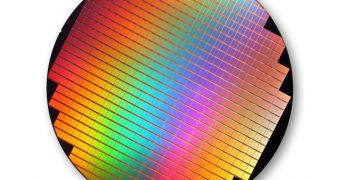With each new year, Apple has typically doubled the storage capacity of its devices based on flash storage, an act that has usually resulted in certain difficulties for NAND-chip makers when trying to meet demand. This, of course, happened in the past, but 2010 might be somewhat more demanding for the NAND market, seeing how Apple is no longer the only maker of flash-based consumer electronics. The Google Nexus, Motorola Droid and Palm Pre handsets, among others, are expected to try to match Apple's storage offerings.
iSupply predicts that 2010 might see periods of “undersupply” as a result of the strong sales of flash-based handsets. Apple is expected to raise the storage capacity of its iPhones and iPods to more than 32GB, even having the means to produce such devices with 64GB and 128GB of storage, respectively. The research firm also expects iPhone shipments to rise by 33 million during the ongoing year, which will, on its own, put a strain on NAND makers. Not only that, but the aforementioned Apple rivals will likely try to match this capacity through their own means.
“An average of 35.2Gbytes of NAND will be used in each iPhone sold in 2010, iSuppli estimates,” Michael Yang, senior analyst for memory and storage at iSuppli, said. “Furthermore, iPhone shipments are set to rise to 33 million in 2010, up 31.5 percent from 25.1 million in 2009. With the iPhone already the largest application for NAND, this huge growth is likely to lead to some periods of undersupply for the year.”
“The success of the iPhone in the smart-phone category has spurred the launch of a series of competitive mobile phones,” Yang added. “These include the Motorola Droid, HTC Android Iris, Palm Pre and Google Nexus One. Although these phones may choose a different solution for storage memory, such as a microSD card, they will still aim to match the iPhone spec for spec in terms of memory capacity. This bodes well for NAND flash demand.”
Other NAND-based devices whose strong sales might cause difficulties for NAND manufacturers are e-readers and tablet PCs. E-reader usage of NAND flash is expected to be low, but tablets are actually seen as having the potential to become “a serious market-changing segment for NAND vendors.”

 14 DAY TRIAL //
14 DAY TRIAL //